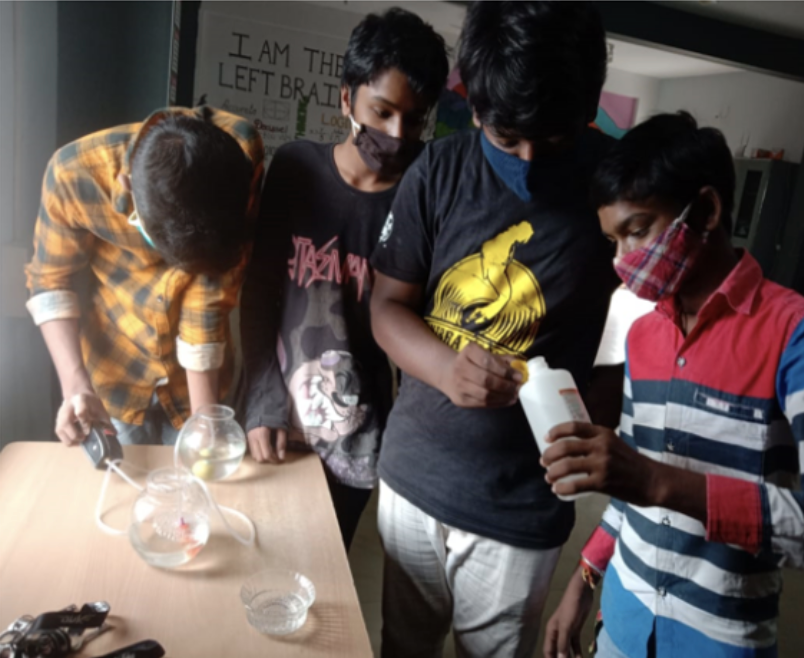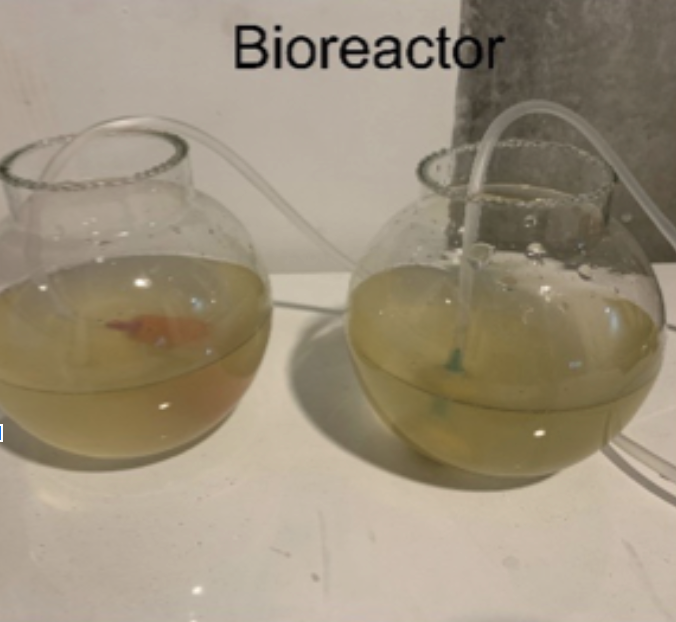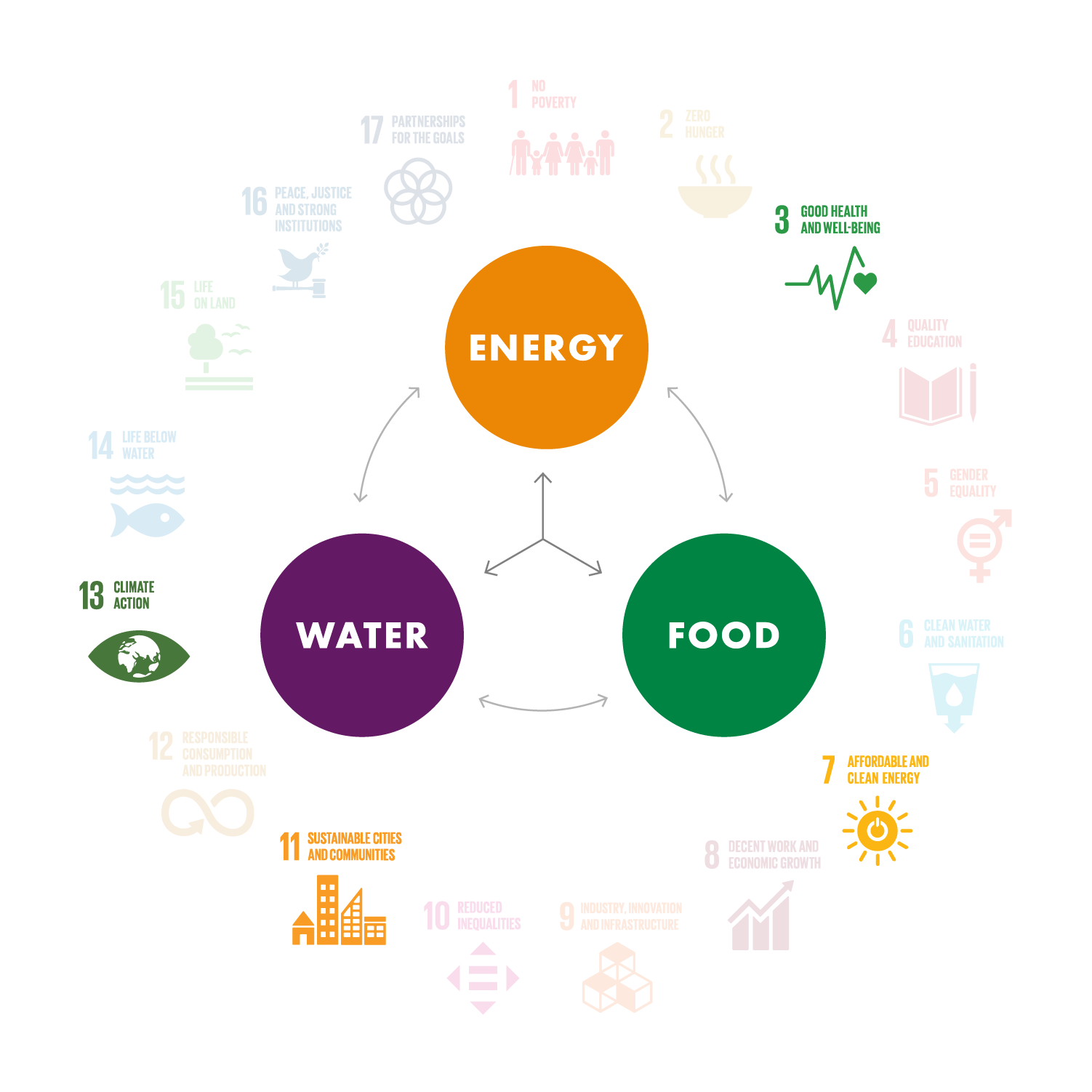NXplorers students from Karnataka Public School – Uttarahalli, studied algae bioreactors and the extraction of biodiesel with the aim of helping their city to address the issues of increasing CO2 emissions.
Using the NXplorers toolkit, the students identified the issue of CO2 emissions and climate change as one of critical importance. They found that algae acts as bioreactor sequesters (this is something that can capture and store carbon dioxide) and subsequently use the bioreactor to extract the biodiesel. The quest to reduce carbon dioxide emissions can contribute to the UN’s Sustainable Development Goals: making cities and communities sustainable, taking action towards climate change.
Rethink biofuel
Indian cities are growing rapidly and require a lot of development to ensure things like universal electricity access and clean modern cooking fuels for all. This requires significant industrial capacity which, unless carefully managed, has the potential to increase greenhouse gas emissions.
Lower-carbon energy sources can help Indian cities to grow sustainably. The NXplorers students addressed this by looking at microalgae, which is renewable, can be farmed regularly and has a high oil content.
Reproduce algae
Algae can be sustainably farmed from fresh water bodies and can double in biomass over 24 hours, making it a sustainable and renewable source of oil content. In fact, one acre of algae can produce enough oil to make 5,000 gallons of biodiesel in a year. Farming algae can help to increase access to affordable and clean energy for many people across the globe.
In India, the demand for fuel increases daily owing to a rapidly increasing population. There are several bodies of water in rural and urban parts of the country with abundant algae produced. Not only can that algae be used in the fuel industry, but extracts can also be used as colouring agents in the textile industry and spirulina (a type of algae) has a high protein level and is a healthy food source. ,
The students collected algae from their nearest fresh water bodies. Then, the algae had to be separated based on its use, either for colouring agents, consumption, or extraction of biodiesel. Once the algae for extraction had been collected, the algae needed to be grown to develop a bioreactor, which then allowed for extraction of biodiesel.

Extracting biodiesel from algae as an alternative fuel source certainly has benefits for the environment, including reducing CO2 emissions by limiting usage of fossil fuels. However, if this method is more widely tested, with investment to develop a manufacturing process, it could greatly contribute towards the prospect of a lower-carbon future.
The local community is curious about the outcomes and benefits of the biodiesel extraction from the students’ research. The students’ school is also trying to create more awareness about being carbon neutral. The project has also made students think about other ways to develop sustainable solutions to the world’s energy demands, whilst keeping our cities and world safe and protecting those in it.

NXplorers programme has given me a new direction to think and develop solutions and plan for the sustainability of solutions. NXplorers has provided the knowledge and research methodologies to me so that today I have realised that there are many alternate fuels available which never harm the environment. I am proud that I am part of this innovative project extracting biodiesel from algae and contribute to zero carbon.
How This Project Contributes To The UN SDGs
3. Good health and well-being
The solution encourages consumption of healthy produce through the harvesting of algae to ensure healthy lives and promote well-being for all at all ages.
7. Affordable and clean energy
The solution uses renewable produce to ensure access to affordable, reliable, sustainable and modern energy for all.
11. Sustainable cities and communities
The solution uses renewable sources to make energy for cities and human settlements inclusive, safe, resilient and sustainable.
13. Climate action
The solution takes steps to take urgent action to combat climate change and its impacts.

Diagram of the United Nations’ Sustainable Development Goals numbered in a large circle, each with a smaller diagram below to represent the specific Development Goal. All of the Development Goals are faded, apart from six of them:
3. Good health and well-being
7. Affordable and clean energy
11. Sustainable cities and communities
13. Climate action
Within the circle there are three circles in a triangle formation reading ‘Energy’, ‘Water’ and ‘Food’, with arrows to show how they are all interconnected.